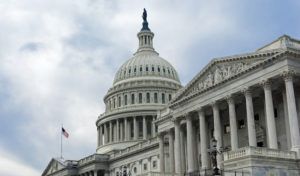
Eligible borrowers unaware of student loan repayment and forgiveness options.
Despite the availability of several repayment and forgiveness options for student borrowers, relatively few eligible students are taking advantage of these programs, according to a recent U.S. Government Accountability Office (GAO) report.
With higher education costs rising faster than inflation and total federal student loan debt estimated at greater than $1 trillion, the U.S. student loan crisis has gained substantial attention. Although the national average student debt for graduates in 2013 was $28,400, experts estimate the average 2015 graduate will owe more than $35,000. Still, a degree’s value cannot be understated: college graduates with bachelor’s degrees will likely earn 66 percent higher salaries and $1 million more over their lifetimes than those without degrees. Moreover, a recent report estimates that two-thirds of job openings in the U.S. workforce will require postsecondary training. As a result, student loan relief has emerged as an integral part of the government’s response to burdensome student debt.
Typically, federal student loan recipients choose from one of three repayment plans: standard, graduated, or extended. Each plan has fixed terms and requires repayment in full. However, the Department of Education offers other repayment plans that feature lower monthly payments based on income and family size, with loan balance forgiveness at the end of the repayment period. To be eligible for these plans, a borrower must have a “partial financial hardship” based on their amount of discretionary income.
The GAO found that, generally, these alternative plans offered by the Education Department are successful—at least in curbing the rising default rates among student loan borrowers. Short-term retention rates have been high throughout the past three years, and less than 1 percent of participants in the two most prominent alternative plans default on their debt, as opposed to 14 percent of those using standard repayment plans.
Yet for various reasons, a significant number of eligible borrowers fail to participate in the income-driven Education Department repayment plans. In 2012—the earliest year for which the GAO could obtain data—roughly half of all Direct Loan borrowers were eligible for income-based repayment, but only 20 percent of eligible borrowers enrolled in such a plan. Based on Education Department data from September 2014, analysis suggests that about 1.6 million (15 percent) of a specified 11.2 million Direct Loan borrowers in repayment were participating in an income-driven repayment plan, despite all of the students in the group being eligible to participate in them.
The Education Department has made progress informing borrowers about income-driven repayment plans, according to the GAO report, by taking steps to make all information available on its websites, publicize and educate followers about the programs on social media, and provide information when students are entering and exiting schools.
However, the GAO emphasizes that the Education Department fails to provide the information directly to borrowers who are already in repayment. Instead, it relies primarily on loan services to communicate about repayment options, even though those lenders are under no specific requirement to do so. Like the Education Department, loan services make general information available on their websites, forcing borrowers to seek out that information. The GAO found that direct, written communication to eligible borrowers remains inconsistent about specific eligibility requirements and how the plans work.
Likewise, the department fails to notify all borrowers eligible for Public Service Loan Forgiveness (PSLF), which offers loan forgiveness on federal student loan balances to borrowers who serve for a minimum of ten years in “public service organizations.” Although the earliest date for loan forgiveness is October 2017, borrowers may certify for PSLF in advance and take advantage of income-based repayment plans in the interim.
Similar to the participation gap for income-driven repayment, only about 4 percent of an estimated 4 million borrowers in public service have certified their loans for PSLF eligibility—though loan forgiveness will not begin until October 2017. According to the GAO, the Education Department has made moderate efforts to increase awareness by providing general information about the program on its website and social media, but borrowers must actively seek that information. The Department sends targeted emails to borrowers during the grace period that follows graduation and delays repayment, but it has not assessed the effectiveness of either form of outreach yet.
Furthermore, the Education Department obligates external loan services to notify borrowers only upon request. The Department has not provided information about PSLF to the full range of public service employees, because it lacks a means of identifying and targeting those employees with Direct Loans. As a result, borrowers in repayment generally do not receive direct information about PSLF and consequently they risk forgoing sizeable loan forgiveness.
The correlation GAO found between participation in these alternative repayment plans and significantly lower rates of defaults raises the possibility that increased awareness and involvement will lead to fewer defaults. Although this may be true, a recent study published by the Brookings Institution highlights the characteristics of typical student loan defaulters. The study finds that students from for-profit colleges, community colleges, and other less-selective colleges are much more likely to default than those from more selective colleges.
For-profit schools present financial hazards of their own, as the Obama Administration recognized last month when it announced its intention to expand loan forgiveness to students who were defrauded by their higher education institutions. These new rules, along with the Revised Pay As You Earn (REPAYE) regulations—which are designed to cut monthly payments even further—illustrate the Administration’s emphasis on helping overburdened borrowers manage student loan repayment.
The GAO maintains that the Education Department must increase awareness among eligible borrowers in order for the loan relief programs to be effective—a seemingly achievable goal if the Department “consistently and regularly” notifies borrowers in repayment and increases outreach.



